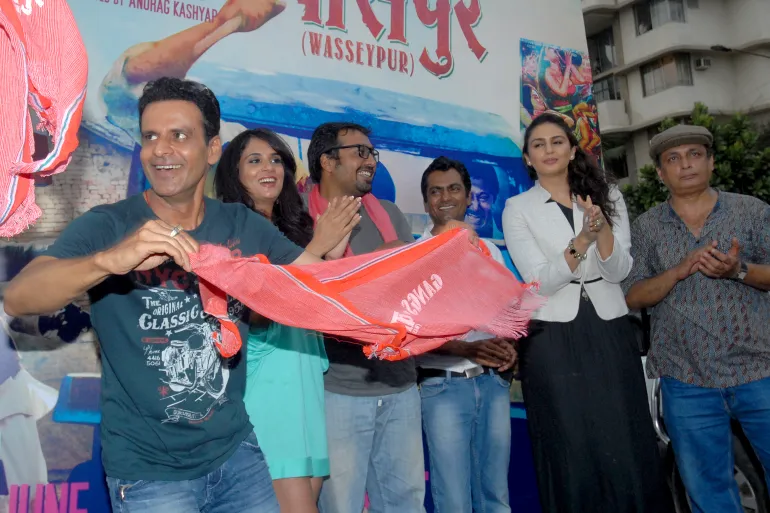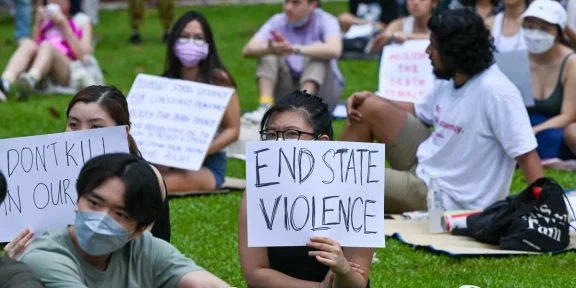When Raghav Bikhchandani found out on social media that Gangs of Wasseypur, the acclaimed Indian blockbuster released in 2012, was all set to hit the theatres in New Delhi again, he knew he could not miss it this time and even alerted several film clubs and WhatsApp groups he was part of.
For the 27-year-old copy editor, getting to watch the two-part film felt like “finally being introduced to the most memed movie in Indian pop culture” as he found himself commuting for three hours on an August afternoon to a seedy theatre in the city’s Subhash Nagar neighbourhood to catch the movie on the big screen.
“I came into Hindi cinema much later in life, and I had missed out on seeing this on the big screen. When I was studying abroad in Chicago, even NRIs in my university would quote dialogues from this movie but I had never gotten a chance to see it. So I knew I couldn’t miss this opportunity,” he told Al Jazeera.
Based in a mining town in eastern India on a decades-long feud between rival gangs mainly dealing in coal, “the black diamond”, the Anurag Kashyap-directed duology attained popularity and critical acclaim following its full-house premier at the 2012 Cannes Film Festival in France.
With an inventive cast, sharp dialogues, pitch-black comedy and gritty setting, the five-hour epic crime and political drama cemented its status as one of the most memorable Indian films of the past decade.

But it isn’t just Gangs of Wasseypur. Bollywood, India’s much-vaunted Hindi film industry based in Mumbai, as well as regional film studios spread across the world’s most populous nation, are witnessing an unprecedented surge in re-releases of films celebrated in the past, some going as far back as the 1960s.
Dozens of such films have hit theatres in many cities this year – far more than ever before – as the country’s nearly $200bn film industry looks to revive its fortunes after taking multiple hits in recent years.
In a country like India, which produces more films a year than Hollywood, cinema is essentially a mass medium, most enjoyed in the dark and dreamy confines of a film theatre showing its latest offering on a 70mm screen. But the coronavirus pandemic hurt Indian films – as it did with movies globally. Since 2022, theatres across the world have been struggling to get people back, a crisis compounded by the rise of online streaming and OTT platforms.
India reeled under two deadly COVID-19 waves in 2020 and 2021, forcing the closure of nearly 1,500 to 2,000 theatres – a majority of them single-screen cinemas, which could not stand up to the corporate franchise-driven multiplexes mostly seen in shopping malls mushrooming across the country.
Then there is the rising cost of making a full-length film. Stars, mainly men, are now paid an unprecedented fee, some amounting to nearly half of a film’s budget. Moreover, the expense of their entourage – makeup and publicity crew, vanity vans, hotels and travel – puts further financial strain on producers and studios. Recently, prominent producer and director Karan Johar told journalists the star fees in Bollywood were “not in touch with reality”.

To make matters worse, Bollywood in recent years has been witness to a string of flops, with even big multiplex chains such as PVR INOX incurring heavy losses – and therefore forced to be more imaginative in their offerings.
It was against such a backdrop that theatre owners and filmmakers decided to re-release old films. Many of films that have returned to theatres were runaway successes the first time around, while others weren’t – until now.
PVR INOX’s lead strategist Niharika Bijli was quoted in a report in September this year as saying the chain re-released a whopping 47 films between April and August this year. While the average occupancy for a new release during this period stood at 25 percent, re-releases enjoyed a higher average of 31 percent, according to the reports.
Filmmaker Anubhav Sinha, whose 2002 hit Tum Bin was released again this year to much fanfare, told Al Jazeera nostalgia has “a large role to play here”.
Source: Aljazeera






























